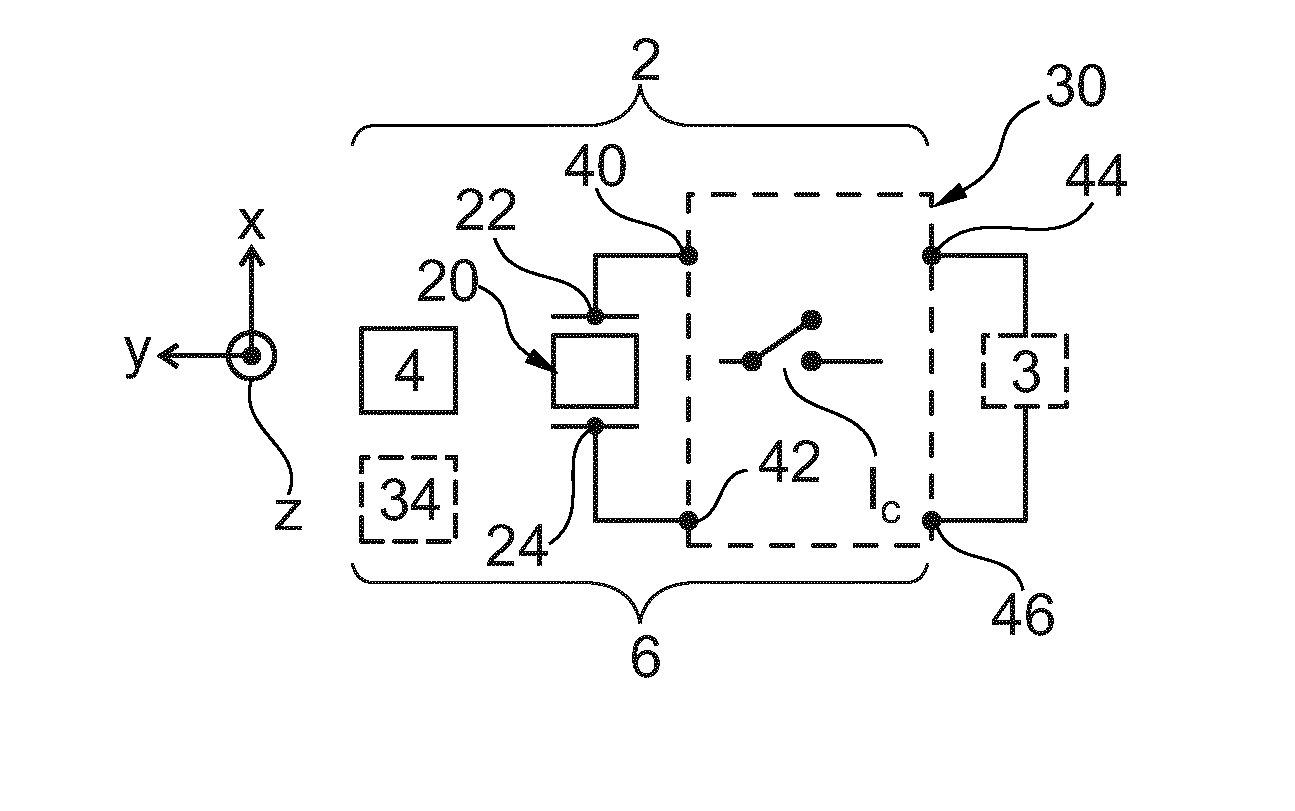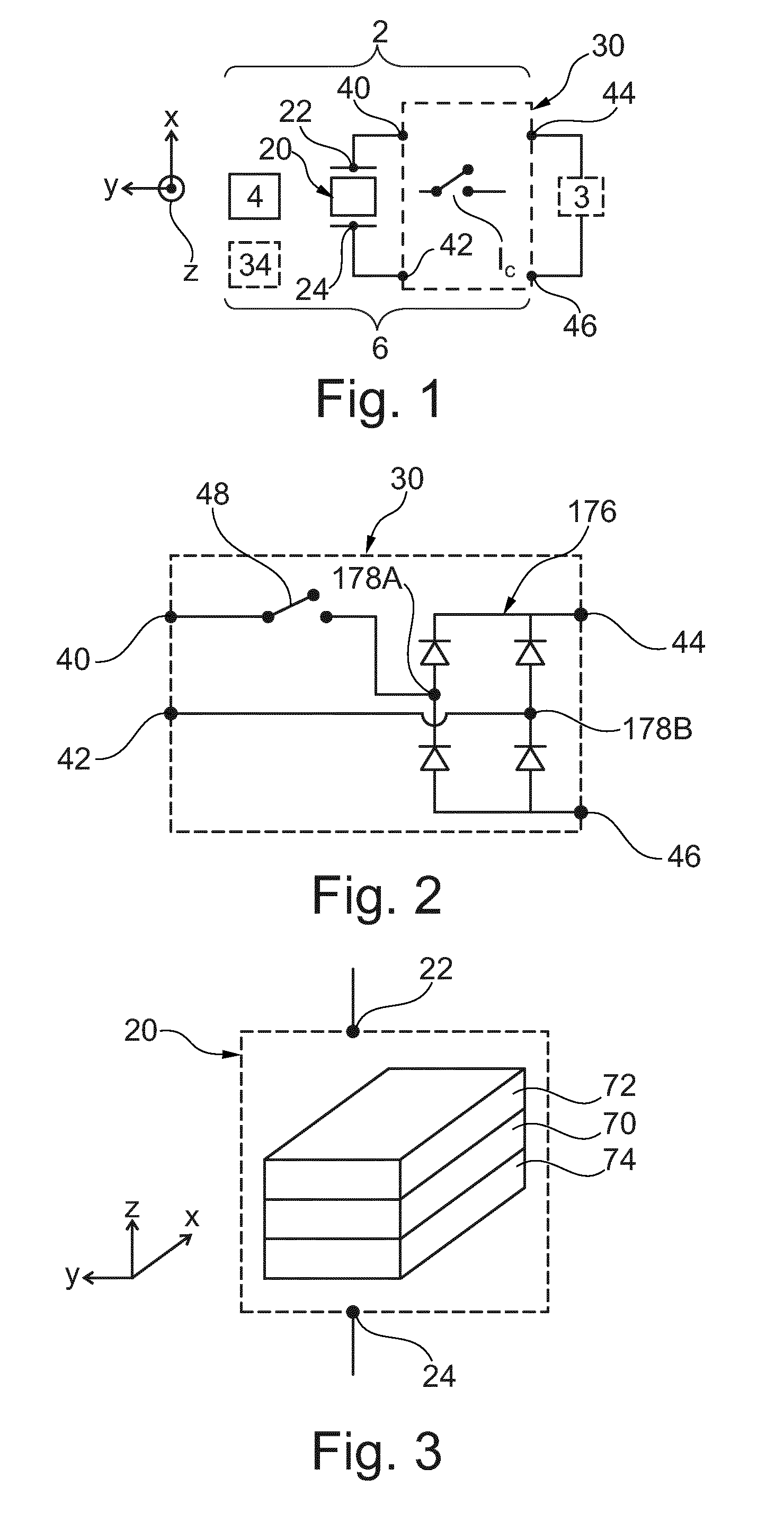Energy harvester
a technology of energy harvester and energy storage, which is applied in the direction of relays, generators/motors, relays, etc., can solve the problems of lowering efficiency, leakage current in transistors and thyristors, and consuming electricity of transistors and thyristors, so as to improve the efficiency of energy harvester and simplify control devices. , the effect of increasing the efficiency of the energy harvester
- Summary
- Abstract
- Description
- Claims
- Application Information
AI Technical Summary
Benefits of technology
Problems solved by technology
Method used
Image
Examples
Embodiment Construction
[0037]In the figures, the same references are used to denote the same elements.
[0038]Hereinafter in this description, the features and functions that are well known to those skilled in the art are not described in detail.
[0039]FIG. 1 represents an electricity generator 2 for powering an electrical load. In this particular case, the electrical load is a load capable of storing electrical energy. For example, it is a capacitor 3.
[0040]The generator 2 comprises a source 4 of energy to be harvested and a harvester 6 of this energy. The harvester 6 powers the capacitor 3 from the energy harvested.
[0041]The source 4 is a source of energy freely available in the environment of the harvester 6.
[0042]The harvester 6 comprises a converter 20, a collection circuit 30 and a control device 34 for the circuit 30.
[0043]The converter 20 converts a variation of the energy to be harvested into a corresponding excess of electrical charges on one connection terminal 22 or 24 relative to the other conne...
PUM
 Login to View More
Login to View More Abstract
Description
Claims
Application Information
 Login to View More
Login to View More - R&D
- Intellectual Property
- Life Sciences
- Materials
- Tech Scout
- Unparalleled Data Quality
- Higher Quality Content
- 60% Fewer Hallucinations
Browse by: Latest US Patents, China's latest patents, Technical Efficacy Thesaurus, Application Domain, Technology Topic, Popular Technical Reports.
© 2025 PatSnap. All rights reserved.Legal|Privacy policy|Modern Slavery Act Transparency Statement|Sitemap|About US| Contact US: help@patsnap.com



